Industry Insights Radiant Heat with Hardwood Floors
April 3, 2021
The majority of homes in the US utilize a traditional forced air heating system. Forced air heating systems work by heating air which in turn heats the people and objects in the room. In comparison, radiant heating systems, such as those used for hardwood floors, work by directly warming the people and objects in the room. A subtle difference between the two types but one which has profound benefits to comfort, maintenance, and health.
The Problem With Forced Air
The traditional forced air heating system is easy to recognize by the familiar sound of the furnace kicking on and off. However, with forced air heating systems comes the delicate balancing act of trying to stay comfortable.
Like a yo-yo, the home’s temperature cycles through ups and downs. As a result homeowners are constantly adjusting the thermostat, wrapping or unwrapping themselves in blankets, or positioning fans to mix air in an all too familiar game to create a comfortable living environment where they can relax.
As warm air from a furnace is pushed into a room it typically rises to the ceiling where it stays. Within a room near the ceiling the temperature can be significantly warmer than the temperature closer to the floor. This can sometimes be felt when going from the first floor level to a second floor. The upstairs can be considerably warmer than the downstairs all because the heat rises.
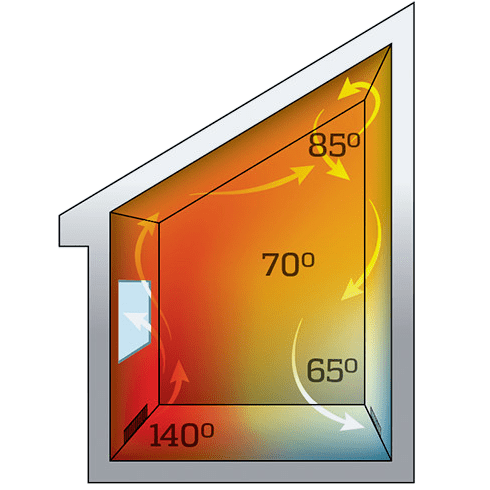
Source: Warmboard.com
“It was one of those March days when the sun shines hot and the wind blows cold: when it is summer in the light, and winter in the shade.”
– Charles Dickens
Forced air heating systems work by heating air which in turn heats the people and objects in the room.
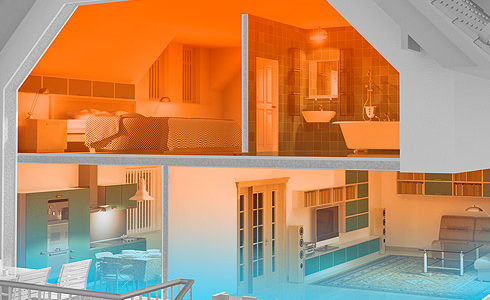
Forced Air Heat Distribution
Source: Warmboard.com
In comparison, radiant heating systems, such as those used for hardwood floors, work by directly warming the people and objects in the room. This small difference has profound benefits to comfort, maintenance, and health.
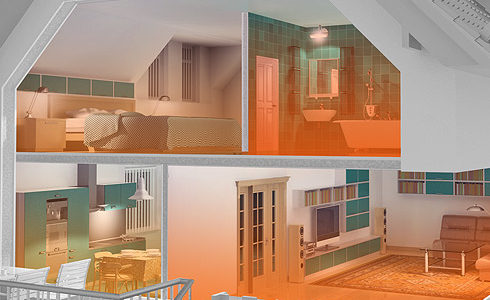
Radiant Heat Distribution
Source: Warmboard.com
The Problem With Forced Air
The traditional forced air heating system is easy to recognize by the familiar sound of the furnace kicking on and off. However, with forced air heating systems comes the delicate balancing act of trying to stay comfortable.
Like a yo-yo, the home’s temperature cycles through ups and downs. As a result homeowners are constantly adjusting the thermostat, wrapping or unwrapping themselves in blankets, or positioning fans to mix air in an all too familiar game to create a comfortable living environment where they can relax.
As warm air from a furnace is pushed into a room it typically rises to the ceiling where it stays. Within a room near the ceiling the temperature can be significantly warmer than the temperature closer to the floor. This can sometimes be felt when going from the first floor level to a second floor. The upstairs can be considerably warmer than the downstairs all because the heat rises.

Source: Warmboard.com
“It was one of those March days when the sun shines hot and the wind blows cold: when it is summer in the light, and winter in the shade.”
– Charles Dickens
Forced air heating systems work by heating air which in turn heats the people and objects in the room.

Forced Air Heat Distribution
Source: Warmboard.com
In comparison, radiant heating systems, such as those used for hardwood floors, work by directly warming the people and objects in the room. This small difference has profound benefits to comfort, maintenance, and health.

Radiant Heat Distribution
Source: Warmboard.com
Types of Radiant Heat
If you have ever experienced walking into a tile bathroom on a cold winter morning you are aware it is not a pleasant feeling. Having a radiant heat system would be a pleasant reprieve to stepping from bath mat to bath mat all to avoid stepping on the cold tile floor.
But which radiant heat system is the right one to select for your home application? Radiant heat systems can be separated into one of two types: Hydronic heating systems and Electric heating systems. Electric Heating systems work best for tile while Hydronic heating systems work can work well from tile to hardwood.
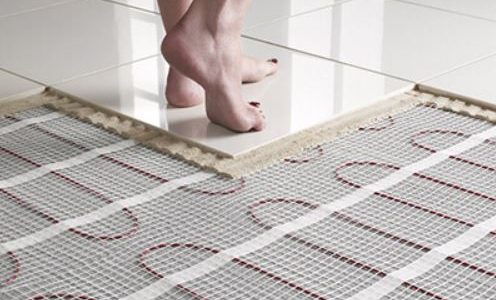
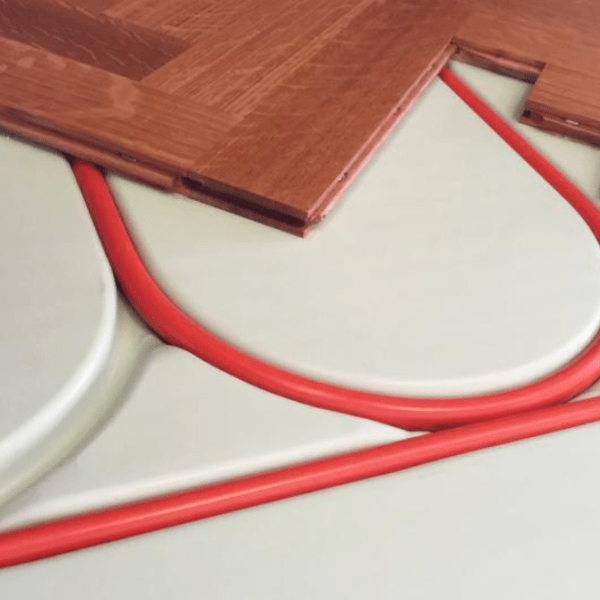
Hydronic Heating System
Hydronic heating systems use hot water pumped through thick aluminum alloy tubes to provide a high level of thermal conductivity. They are ideal for whole-house heating but are typically only installed during a home’s construction and can be difficult to retrofit in remodel projects.
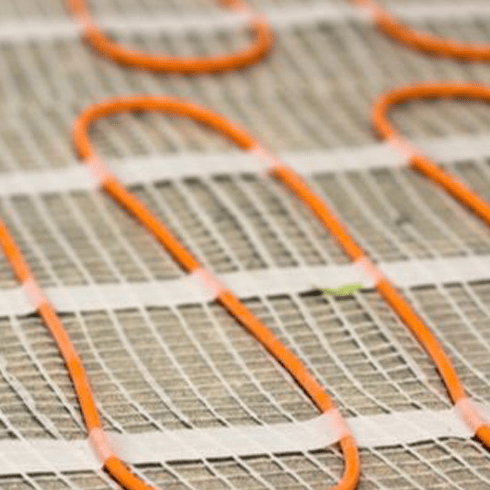
Electric Heating System
Electric floor heating systems use electric heating elements woven in a serpentine pattern to heat the floor. In-floor heating systems are known for being easy to install and ideal for remodeling projects. They heat up in 30-60 minutes and can be turned on or off as needed to keep costs down.
Types of Radiant Heat
If you have ever experienced walking into a tile bathroom on a cold winter morning you are aware it is not a pleasant feeling. Having a radiant heat system would be a pleasant reprieve to stepping from bath mat to bath mat all to avoid stepping on the cold tile floor.
But which radiant heat system is the right one to select for your home application? Radiant heat systems can be separated into one of two types: Hydronic heating systems and Electric heating systems. Electric Heating systems work best for tile while Hydronic heating systems work can work well from tile to hardwood.

Hydronic Heating System
Hydronic heating systems use hot water pumped through thick aluminum alloy tubes to provide a high level of thermal conductivity. They are ideal for whole-house heating but are typically only installed during a home’s construction and can be difficult to retrofit in remodel projects.
Electric Heating System
Electric floor heating systems use electric heating elements woven in a serpentine pattern to heat the floor. In-floor heating systems are known for being easy to install and ideal for remodeling projects. They heat up in 30-60 minutes and can be turned on or off as needed to keep costs down.


Types of Radiant Heat
If you have ever experienced walking into a tile bathroom on a cold winter morning you are aware it is not a pleasant feeling. Having a radiant heat system would be a pleasant reprieve to stepping from bath mat to bath mat all to avoid stepping on the cold tile floor.
But which radiant heat system is the right one to select for your home application? Radiant heat systems can be separated into one of two types: Hydronic heating systems and Electric heating systems. Electric Heating systems work best for tile while Hydronic heating systems work can work well from tile to hardwood.

Hydronic Heating System
Hydronic heating systems use hot water pumped through thick aluminum alloy tubes to provide a high level of thermal conductivity. They are ideal for whole-house heating but are typically only installed during a home’s construction and can be difficult to retrofit in remodel projects.

Electric Heating System
Electric floor heating systems use electric heating elements woven in a serpentine pattern to heat the floor. In-floor heating systems are known for being easy to install and ideal for remodeling projects. They heat up in 30-60 minutes and can be turned on or off as needed to keep costs down.

Benefits of Radiant Heated Floors
No Noise
Radiant heat for hardwood floors is essentially silent. There is not furnace starting, running, or stopping which echoes throughout the home. Instead, you will hear just about nothing when a radiant heating system is on and working.
Non-Allergenic
As radiant heat systems work by heating objects and people directly instead of air as a medium it doesn’t move air particle as much. With less air particles moving about there will be fewer pollutants being disturbed and ending up the eyes and noses of people in the home.
See the typical inside of a duct that supplies the air which you breathe in.
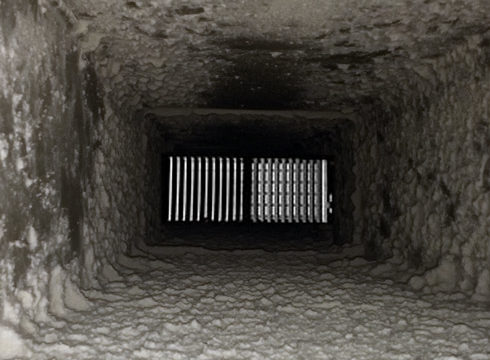
Source: Warmboard.com
Uniform Heating
When it comes to forced air heating there will be areas of a room that are colder than others. This can be due to vent placement or heat loss as the air travels through the duct. This problem does not occur with radiant heat systems as the whole floor is evenly warmed so the room will have an ambient temperature that is considerably more uniform. The heat for radiant floors will also stay lower to the ground as it radiates up from the flooring material.
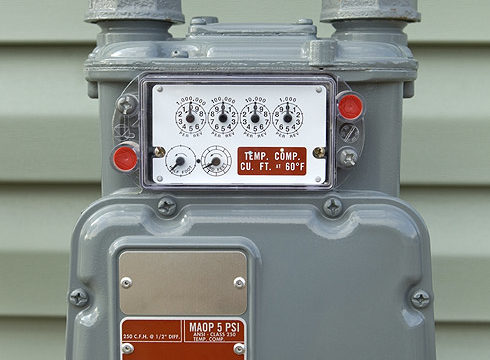
Source: Warmboard.com
Energy Efficient
Radiant floor heating is a superior form of heat transfer and will increase the energy efficiency of a home because it transfers heat directly to the objects in a room instead of relying on a fluid medium like air to disperse heat.
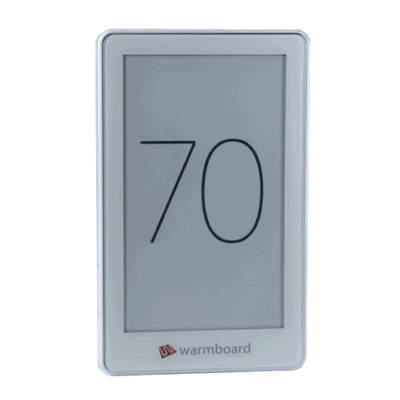
Source: Warmboard.com
Ease of Use
Radiant heat systems pair well with smart thermostats allowing for specific time control of their operation. Additionally, the use of smart thermostats allows for homeowners to monitor the shift in temperatures and adjust as need or be programed in advance to mirror a homeowner’s schedule.
Durability
The majority of radiant heat systems are enclosed and require very limited maintenance for their upkeep. It can be as easy as changing batteries in a thermostat once every 8-12 months.
Radiant Heat Guidelines For Hardwood Floors
Most radiant heat systems are able to be used for a wide-range of materials and can operate at a various temperatures. For instance, the temperature a radiant heat system for hardwood floors can be set to 75º F will when used with tile it can be set to 85º F. If you choose to use radiant heat under your hardwood floors then it is important to understand at what temperature ranges it can normally operate within.
Using a radiant heat system on hardwood floors under excessive temperatures or for extended lengths of time in conjunction with poor relative humidity control can cause cracking, splitting, bowing, or cupping of the hardwood. The maximum recommended surface temperature for radiant heat under an installed hardwood floor is 80º F.
Comfort Level
For most people, a floor with a surface temperature between 70º F – 80º F will create an ideal level of comfort. Raising the temperature above 80º F is not only bad for the health of your floor but will result in physical discomfort for you.
When a person comes into contact with a surface temperature greater than 85°, the hypothalamus gland, which is responsible for regulating a person’s body temperature, believes your body is going to overheat. Your bodies response is to cool down and will begin to sweat. Sweating is not considered comfortable while walking throughout your home.
Humidity Control
It is important to note that humidity control during the different seasons of the year is vital for maintaining a healthy floor and living environment. To little humidity combined with a radiant heat system can cause your hardwood flooring to dry out. The tell-tale signs of this are gaps in-between boards, cracking, and splitting of the wood.
Keeping the humidity of the home between 30% – 50% will allow your floor to breathe, preventing it from drying out from the radiant heat.
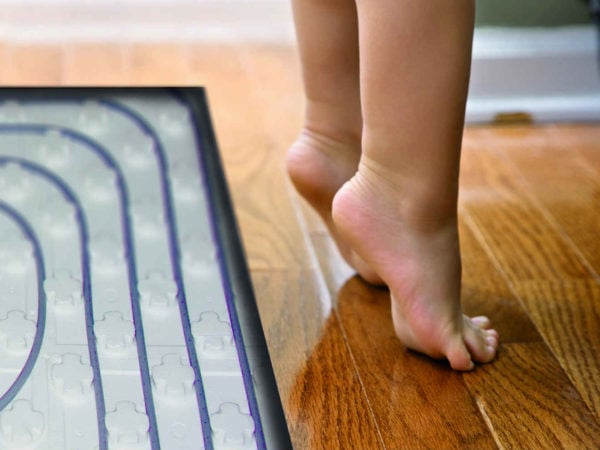
Share this on:
